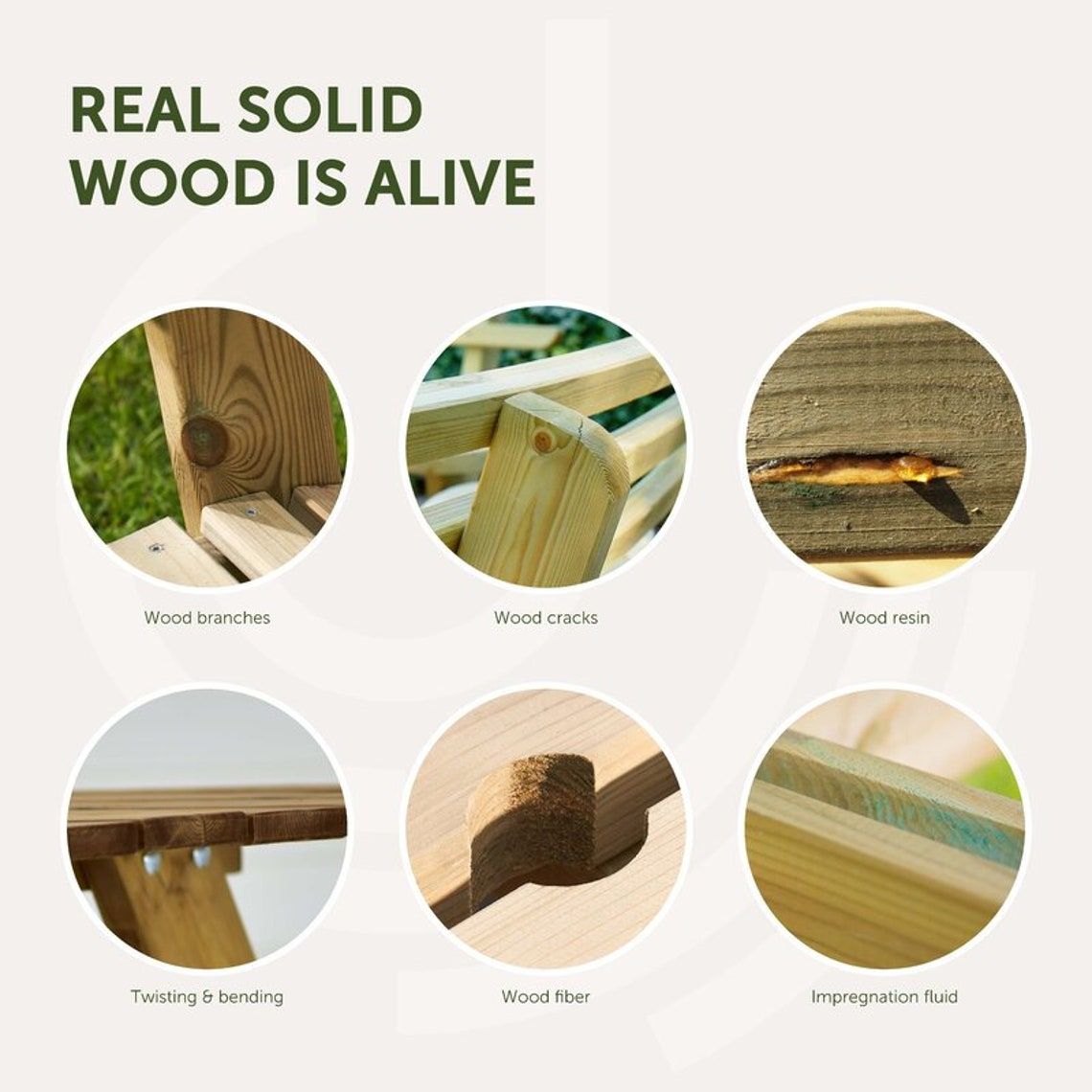Wood is a complex and dynamic material that can develop imperfections over time. Even after being cut down, wood can still undergo changes due to moisture and humidity levels in its environment. These changes can cause the wood to shrink or expand, leading to cracks and other imperfections. In this blog post, we will explore the science behind wood shrinkage and expansion, the impact of cracks and small surface shakes on furniture structural integrity, and best practices for avoiding and repairing wood imperfections.
Wood Shrinkage and Expansion
As a natural material, wood contains a significant amount of moisture, which is essential for the wood's strength and flexibility. However, once the wood is cut down and processed into lumber, it begins to dry out. During this process, the wood releases moisture and undergoes a significant amount of shrinkage.
After the wood has been dried to a certain level, it is ready for use in furniture and other applications. However, even after the wood has been dried, it can still be affected by changes in humidity levels in the environment. When the humidity level increases, the wood will absorb moisture and expand. Conversely, when the humidity level decreases, the wood will release moisture and shrink.
The degree of wood shrinkage and expansion can vary based on the wood species, the moisture content, and the temperature and humidity levels in the environment. If wood is exposed to rapid and significant changes in humidity, it can develop cracks and other imperfections.
Impact of Cracks and Small Surface Shakes on Furniture Structural Integrity
While cracks and small surface shakes can be unsightly, they do not necessarily impair the structural integrity of the furniture. In fact, many small cracks and shakes can be considered a natural part of the wood's character and can even add to the beauty of the piece.
Most cracks and small surface shakes occur due to the natural drying process of wood and are not an indication of poor construction or weak materials. Additionally, small cracks and shakes are often located on the surface of the wood and do not penetrate the entire thickness of the piece. Therefore, they do not significantly affect the strength or stability of the furniture.
However, if the cracks or shakes are large or deep enough to penetrate through the thickness of the wood, they can compromise the structural integrity of the furniture. In these cases, the piece should be repaired or replaced to prevent any safety hazards.
Avoiding and Repairing Wood Imperfections
While it may not be possible to completely avoid wood imperfections, there are steps that can be taken to minimize their occurrence. Here are some best practices for avoiding and repairing wood imperfections:
-
Use properly dried wood: To reduce the likelihood of cracks and other imperfections, use wood that has been properly dried to a moisture content of around 8% to 10%.
-
Store wood correctly: Store wood in a dry, cool, and well-ventilated space to prevent moisture buildup.
-
Avoid knots: Avoid using wood with large knots, as these can be weak spots that are more prone to cracking.
-
Repair small imperfections: Small cracks and surface shakes can be repaired with wood filler or epoxy.
-
Replace damaged sections: If the damage is severe, the damaged section of the wood may need to be replaced entirely.
Conclusion
Wood is a natural and dynamic material that can develop imperfections over time due to changes in moisture and humidity levels. While cracks and small surface shakes are often a natural part of the wood's character and do not impair furniture's structural integrity, it is important to be aware of their impact on the piece. By understanding the causes of wood imperfections and following best practices for avoiding and repairing them, you can help ensure that your furniture remains functional and attractive for years to come.
Sources:
- Wood Handbook - Wood as an Engineering Material, USDA Forest Service

